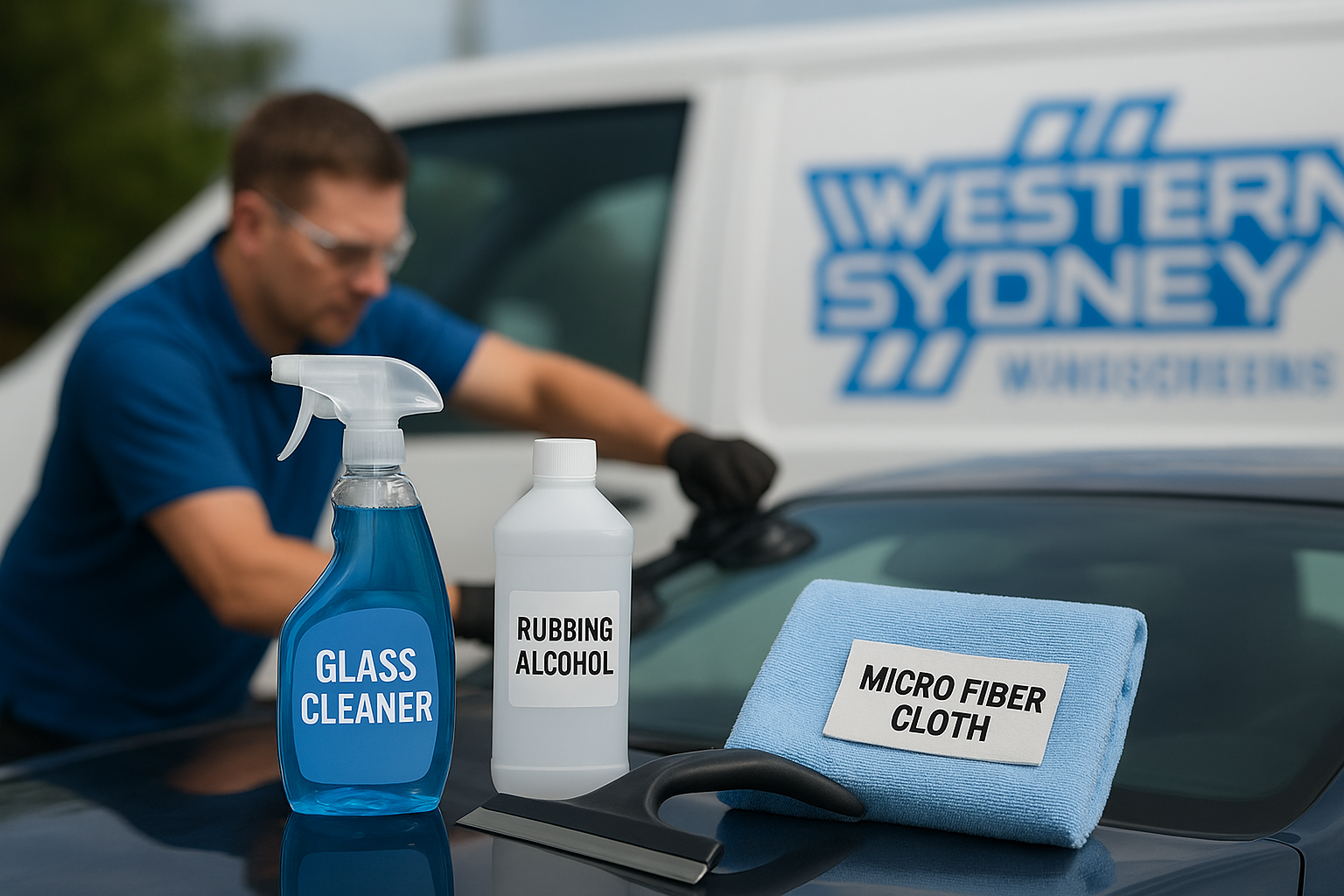How to Clean a Car Windscreen at Home like An Expert
How to Clean a Car Windscreen at Home Tips and Tricks

The windscreen is a important safety component like an Glasses for myopia person. The windscreen provides a clear view of the road and protects passengers from debris, wind and sunlight. By connecting the windscreen to the roof, it increases structural stability and strengthens the car. Contaminants like dirt, dust and fingerprints can quickly accumulate on the glass. These substances can cause glare and fading of the glass if they are not removed. Over time, minor scratches can develop.
Use basic cleaning materials to clean the windscreen. This cleaning should be done once a week. Regular maintenance increases safety, improves appearance, reduces scratches and prolongs the life of the wiper blades and windscreen.
Why a Clean Windscreen Matters for Better Vision
Keeping your windscreen clean is not just about a shiny appearance. A dirty windscreen directly affects safety, comfort, and damages your car’s glass and wipers. Following are the keen reasons for cleaning windscreen from interior and exterior:
Enhanced Visibility and Give life to the Windscreen
Smudges or streaks are often the main reasons that blur your windscreen, block your vision, and even cause unnecessary irritation while driving. Smudges are those cloudy or greasy marks that comes from fingerprints, oily touches, or wiping the glass with a dirty cloth. Streaks are thin lines that appear when cleaning solution or water dries unevenly on the windscreen. They usually happen when you use the wrong cloth or clean in direct sunlight. Grime is a thick layer of dirt, dust, and pollution that builds up on the windscreen. It makes the windscreen look dull and lowers visibility.
Preventing Distractions and Glare
A dirty windscreen can easily distract you while driving. Sunlight or headlights from other cars reflect off the marks and buildup on the glass, temporarily block your view. By keeping your windscreen clean, you stay focused on the road, drive with less stress, and greatly lower the risk of accidents.
Maintaining Your Vehicle's Aesthetic Look
A clean windscreen contributes to the overall look of your car as it includes a large portion of the front view. Regular cleaning prevents permanent stains from bird droppings, tree sap, or pollutants and reduce your cost of car service center. A well maintained car is more likely to retain its value over time, especially if you plan to sell it in the near future.
Essential Supplies for Windscreen Cleaning
Having the right tools and cleaning agents is important. Using improper products or methods can cause scratches, streaks, or damage to tinted windows.
Choosing the Right Glass Cleaner
- Opt for an ammonia free automotive glass cleaner to protect window tints and avoid discolouration.
- Automotive-specific products are designed to remove road grime or dirt without leaving streaks, and cleaning this type of windscreen with normal household cleaners is hard.
- For heavily soiled glass, use a stronger cleaner sparingly and rinse well before starting to clean.
The Power of Microfibre Cloths and Towels
- Microfibre cloths are soft, lint-free, and highly absorbent, perfect for both interior and exterior cleaning.
- Use separate cloths for interior and exterior to prevent transferring grease or dirt. Try not to use the dry cloth on the windscreen as the minor said particles will cause scratches.
- Keep a few dry cloths for buffing after washing for a crystal clear finish.
Alternative Cleaning Solutions Present at Home
Sometimes, you can use household items to clean the windshield effectively if you apply them properly.
White Vinegar: Great for tackling tough spots like mineral deposits or hard water stains that regular cleaners can’t remove. Just mix equal parts vinegar and water in a spray bottle, spritz it on the glass, let it sit for a minute, and then wipe clean for a streak-free finish.
Rubbing Alcohol: Perfect for stubborn marks such as greasy fingerprints, tree sap, or bug residue. You can use it directly for tough spots or dilute it with water to make a gentler cleaning solution. It evaporates quickly, leaving the windscreen clear without streaks to reduce
windscreen repair risks.
Other Useful Tools That Help you with Daily Cleaning
- Spray Bottle: For even distribution of liquid cleaner.
- Squeegee: Helps remove water or cleaning solution efficiently without streaking.
- Old Newspaper: Can be used to buff glass, but avoid ink transfer to the interior.
Protective Gear
- Rubber Gloves: Wearing gloves helps shield your skin from direct contact with cleaning products and prevents irritation from dirt or harsh solutions.
- Eye Protection: Not always necessary, but using safety glasses is a smart choice when working with stronger chemicals to avoid accidental splashes.
Step-by-Step Guide to Cleaning Your Car's Exterior Windscreen
The exterior is the first line of defense against dirt, bugs, and pollution. Cleaning it properly prevents scratches and streaks.
Preparation: Setting Up for Glass Cleaning
- Park your car in the shade to prevent the cleaner from drying too quickly.
- Gather all your cleaning supplies before starting to clean the windscreen.
- Ensure you have access to a hose or bucket of clean water for rinsing.
Initial Rinse and Debris Removal
- Start by rinsing the windscreen with water to remove loose dirt and grit.
- This prevents scratching the glass during the washing process as the cleaning with dry cloth makes scratches.
Applying the Glass Cleaner
- Spray the glass cleaner evenly over the windscreen or onto a microfibre cloth.
- Wipe gently in small sections to ensure full coverage.
Wiping in the Right Motions
- Use vertical strokes on one side and horizontal strokes on the other to reduce streaks and help you identify any unclean sections.
- Apply gentle, even pressure to avoid damaging the glass or wipers.
Addressing Stubborn Stains
- Bird droppings, sap, and bug residue require extra deep cleaning and care.
- Apply vinegar or rubbing alcohol to a microfibre cloth and rub gently on the screen will remove the stains left.
- Avoid harsh scrubbing that can scratch the glass.
The Important Drying and Buffing Stage
- Dry immediately after cleaning using a fresh, dry microfibre cloth.
- Buff the glass in circular motions to remove remaining streaks.
- Inspect for missed spots and repeat cleaning if necessary.
Tips for a Streak-Free Finish
- Avoid cleaning in direct sunlight.
- Use separate cloths for washing and buffing.
- Inspect edges and corners carefully for hidden dirt or use an brush to remove dirt from edges completely.
How to do Interior Windscreen Cleaning
Cleaning the inside of your windscreen takes extra care to stay shiny. Fingerprints, dust, smoke residue, and even condensation can quickly build up, leaving streaks that affect visibility. With the right approach, you can keep the interior glass spotless and clear for a safer, more comfortable drive.
The inside of your windscreen can get foggy, especially during cold or humid days, making it harder to see the road. Dust from the dashboard and vents also sticks to the glass, causing glare when light hits it. A quick, regular clean keeps your view clear and your driving much safer.
Dealing with Interior Film and Residue
That hazy layer you sometimes see on the inside of your windscreen often comes from plastics releasing gases, leftover cleaning sprays, or cigarette smoke. The easiest way to clear it is by using a microfibre cloth with a gentle glass cleaner. Just remember to always spray the cleaner onto the cloth, not directly on the glass near your dashboard or electronics.
This is paragraph text. Click it or hit the Manage Text button to change the font, color, size, format, and more. To set up site-wide paragraph and title styles, go to Site Theme.
Put the cleaner on a cloth instead of spraying it straight onto the glass. Wipe using both up and down and side to side movements to cover the whole windscreen surface. Don’t forget the corners, edges, and spots around the vents where dirt tends to build up.
How to Remove and Prevent Windscreen Condensation
Wipe away light fog with a dry microfibre cloth for a quick fix. If your windscreen fogs up often, apply an anti-fog solution to the inside glass. Keeping the interior clean also makes it harder for condensation to build up in the first place.
Reaching Difficult Spots
Angle your cloth and use light pressure to clean along the edges of the windscreen. For tight corners or the areas behind the wipers where dust collects, a soft brush can help you reach and clean more easily.
Don’t Forget Your Wiper Blades
Your windscreen wipers work hard to keep your view clear during rain, snow, and dusty conditions. But if the blades are dirty, worn or rusty, they can leave streaks behind or worse, scratch the glass. Regular cleaning keeps them working efficiently and extends their lifespan.
Why Cleaning Wiper Blades Matters
- Dirt, grit, and debris often stick to the rubber edges, which can drag across the glass and cause scratches.
- Clean blades ensure smooth, streak free wiping and better visibility in bad weather.
- Taking care of your blades helps them last longer, saving you from frequent replacements
How to Clean Them Properly
- Lift the wipers gently away from the windscreen so they don’t snap back while you’re cleaning.
- Dampen a cloth with soapy water or rubbing alcohol, then wipe along the length of each blade to remove dirt and buildup.
- Rinse the blades with clean water and dry them before placing them back.
- Be careful not to bend, twist, or pull too hard on the rubber to avoid damage.
Maintaining a Spotless Windscreen
Think of your windscreen like your eyes on the road; if it’s dirty, your vision is limited. Clean it once a week to stop grime buildup, and after a long trip, give it extra attention. Replace wipers every 6–12 months, even if they look fine, because worn blades cause streaks and scratches you might not notice until it’s too late. Apply water repellent coating to make rain slide off for clearer vision. Keep your dashboard dust-free to reduce glare and smudges on the glass. Park in the shade when possible to keep the windscreen cooler, protect it from sun damage, and reduce sticky residue. These small habits make a big difference, helping you drive safely in bad weather.
